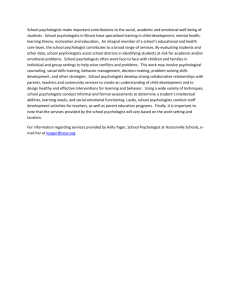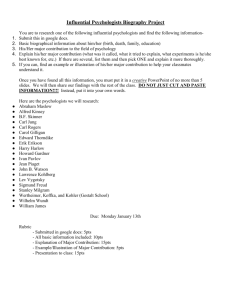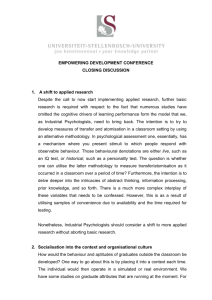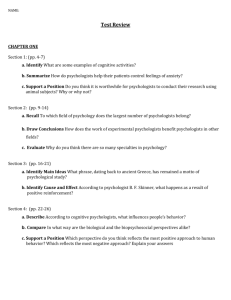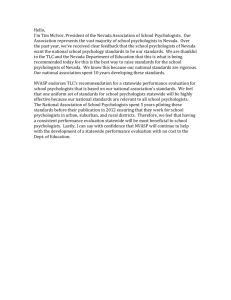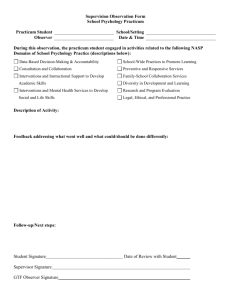Animal Research Ethics
advertisement
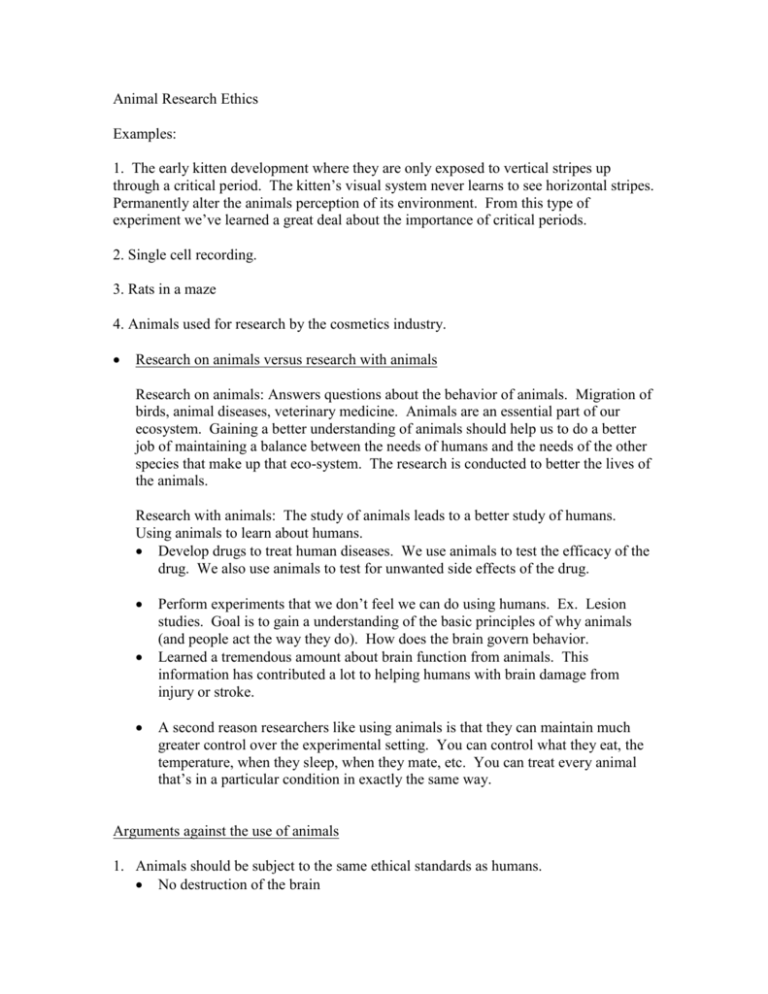
Animal Research Ethics Examples: 1. The early kitten development where they are only exposed to vertical stripes up through a critical period. The kitten’s visual system never learns to see horizontal stripes. Permanently alter the animals perception of its environment. From this type of experiment we’ve learned a great deal about the importance of critical periods. 2. Single cell recording. 3. Rats in a maze 4. Animals used for research by the cosmetics industry. Research on animals versus research with animals Research on animals: Answers questions about the behavior of animals. Migration of birds, animal diseases, veterinary medicine. Animals are an essential part of our ecosystem. Gaining a better understanding of animals should help us to do a better job of maintaining a balance between the needs of humans and the needs of the other species that make up that eco-system. The research is conducted to better the lives of the animals. Research with animals: The study of animals leads to a better study of humans. Using animals to learn about humans. Develop drugs to treat human diseases. We use animals to test the efficacy of the drug. We also use animals to test for unwanted side effects of the drug. Perform experiments that we don’t feel we can do using humans. Ex. Lesion studies. Goal is to gain a understanding of the basic principles of why animals (and people act the way they do). How does the brain govern behavior. Learned a tremendous amount about brain function from animals. This information has contributed a lot to helping humans with brain damage from injury or stroke. A second reason researchers like using animals is that they can maintain much greater control over the experimental setting. You can control what they eat, the temperature, when they sleep, when they mate, etc. You can treat every animal that’s in a particular condition in exactly the same way. Arguments against the use of animals 1. Animals should be subject to the same ethical standards as humans. No destruction of the brain No removal of infants from their mother No sensory deprivation or sensory limitation studies. Animals experience the same pain, discomfort, and frustration that humans do. The life of an animal is just as valuable as the life of a human. 2. Harming animals is dehumanizing to the human experimenters. 3. Research on animals is a form of “species-ism”. A prejudice or bias against animals. Arguments for research with animals 1. The suffering of the animal must be weighed against the benefits from the research. The benefits must be much greater than the suffering induced. Psychologists must not induce pain or discomfort if it can be avoided. Ex. The researcher must use a few animals as possible in demonstrating a particular result. The interests of humans outweigh the interests of animals. 2. One argument against the use of animals is that it is de-humanizing to the human researchers. The counterargument is that it’s dehumanizing to choose not to develop tools for helping humans. New surgical techniques New drugs Developing ways of better predicting behavior. 3. Two arguments against species-ism are that: much research on animals benefits animals Again, the interests of humans come from. APA ethical standard for the care and use of animals in research 1. Psychologists who conduct research involving animals treat them humanely. - Psychologists should act on the assumption that procedures that would produce pain in humans will also do so in animals. - Animals must have adequate housing in terms of food, water, temperature, and cleanliness. Psychologists are encouraged to provide animals with an enriched environment, if possible. - Psychologists should maximize comfort for the animal and minimize pain and discomfort. 2. The benefits to science and society must clearly justify the costs to animal subjects. - Psychologists evaluate the cost-benefit ratio of their study. - The species chosen for the study should be best suited to answer the question(s) posed. - The psychologist should always consider the possibility to using other species, non-animal alternatives, or procedures that minimize the number of animals in research. 3. Psychologists acquire, care for, use, and dispose of animals in compliance with current federal, state, and local laws and regulations, and with professional standards. 4. Psychologists trained in research methods and experienced in the care of laboratory animals supervise all procedures involving animals and are responsible for ensuring appropriate consideration of their comfort, health, and humane treatment. 5. Psychologists ensure that all individuals using animals under their supervision have received instruction in research methods and in the care, maintenance, and handling of the species being used, to the extent appropriate to their role. 6. Responsibilities and activities of individuals assisting in a research project are consistent with their respective competencies. 7. Psychologists make reasonable efforts to minimize the discomfort, infection, illness, and pain of animal subjects. 8. A procedure subjecting animals to pain, stress, or privation is used only when am alternative procedure is unavailable and the goal is justified by its prospective scientific, educational, or applied value. 9. Surgical procedures are performed under appropriate anesthesia; techniques to avoid infection and minimize pain are followed during and after surgery. 10. When it is appropriate the animal’s life be terminated, it is done rapidly, with an effort to minimize pain, and in accordance with accepted procedures.
